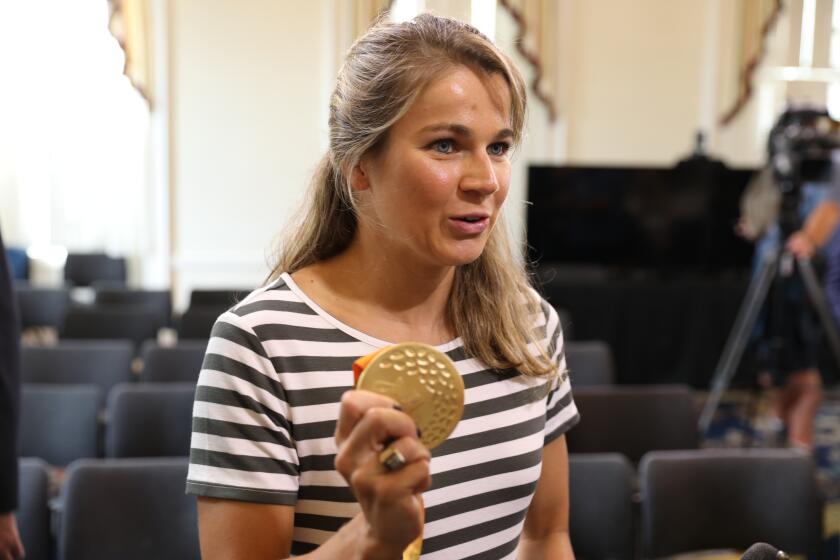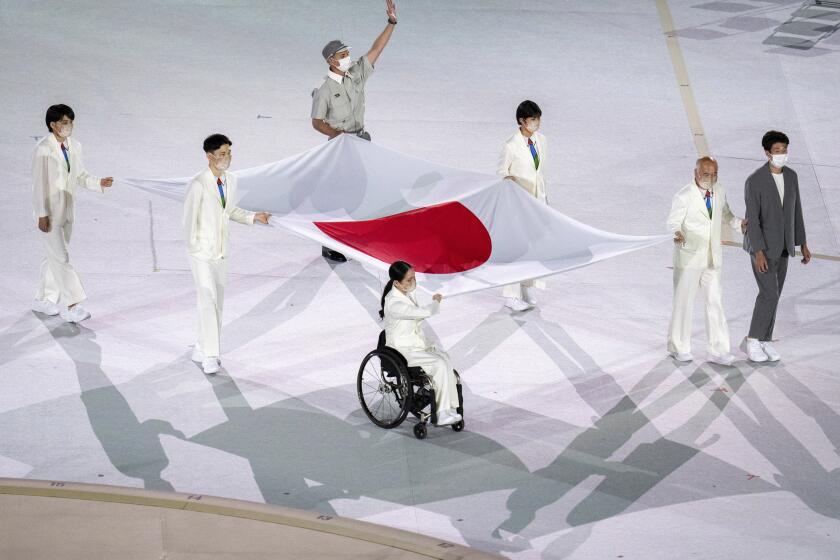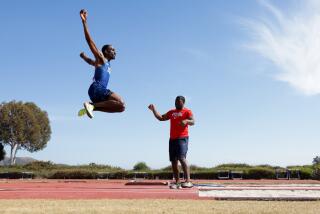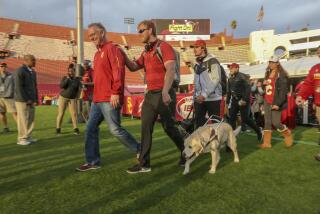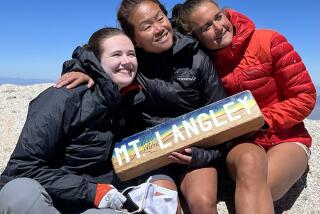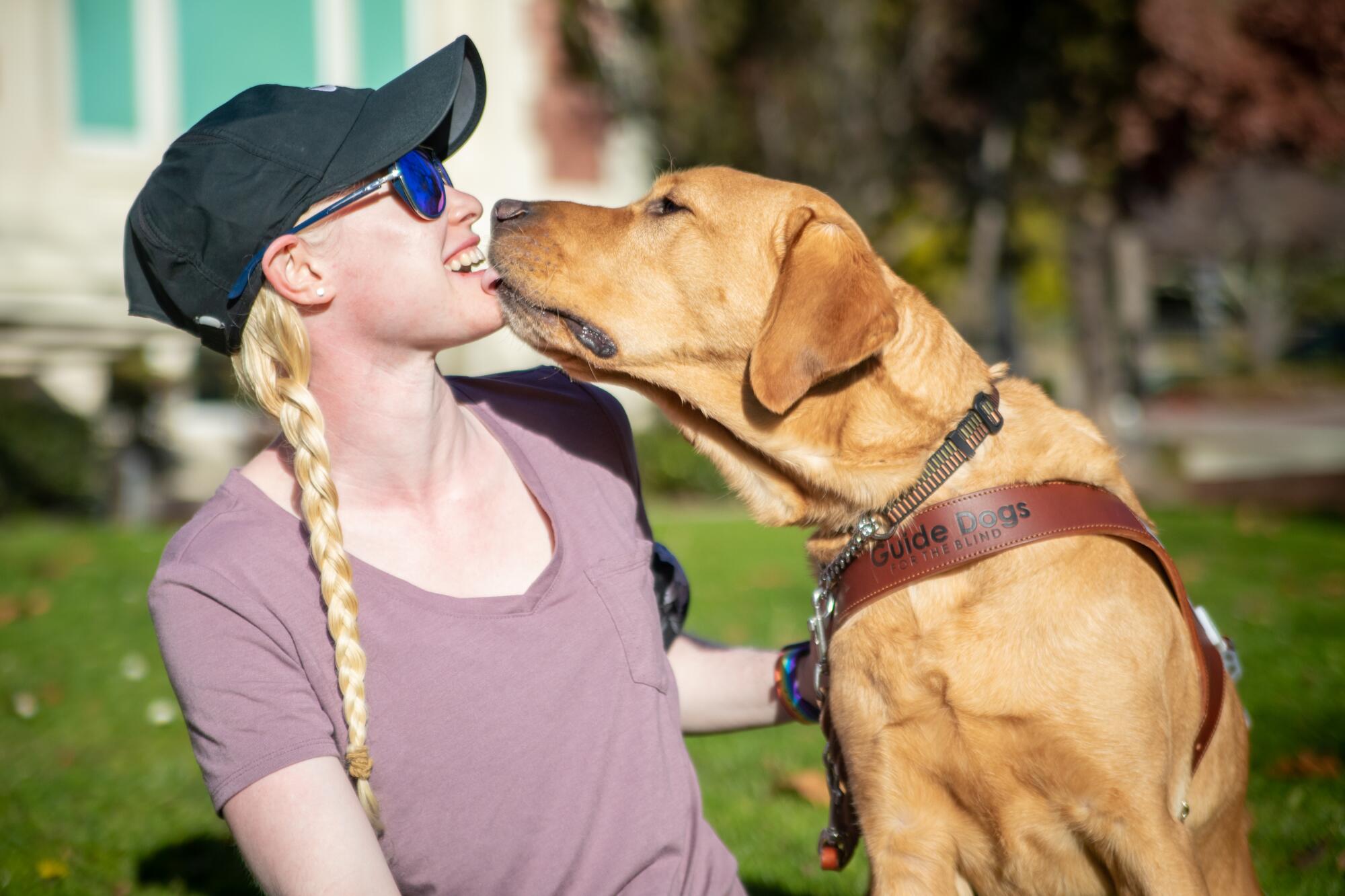
- Share via
The dog is part of her warmup routine, a ritual that Kym Crosby performs before stretching and jogging around the track. She sits on the ground and Tron, her big yellow lab, lays his paws across her legs.
They stay like that for a while, the sprinter and the goofy, energetic animal who knows when to be still.
“It keeps me calm,” she says. “In my right mind.”
Their bond is tight because Crosby — a world-class Paralympic athlete — is legally blind and Tron is her guide dog. She sees well enough to run on her own, barely making out the white lane lines, but relies on him in airports and hotels. They navigate stadiums together and he waits near the track, often close enough to watch, while she races.
All of which makes things tougher for Crosby as she competes at the Tokyo Paralympics, which began Tuesday and run through Sept. 5, because coronavirus restrictions and Japanese regulations forced her to leave Tron at home.
“I’m upset,” she says by telephone. “But if there are things I can’t control, I try not to be too frustrated about it.”
“The bond you have is unlike any other bond you’ll have with another animal or even a human. ... You know they’ve got your back.”
— Kym Crosby on guide dogs
This isn’t the first time the 28-year-old Californian has traveled without her dog. Like other countries, Japan has strict rules about bringing animals — even service animals — into the country. Crosby realized she could not quarantine Tron while dealing with COVID-19 restrictions for herself.
As she prepares for the 100 and 400 meters, her predicament raises questions about whether Paralympians are getting the support they need.
In a story that made headlines earlier this summer, deaf-blind swimmer Becca Meyers withdrew from the competition because the U.S. Olympic & Paralympic Committee refused to let her mother come along as a Personal Care Assistant, or PCA.
The trouble began when Japanese officials, worried about foreigners spreading the coronavirus, asked all national Paralympic teams to trim nonessential staff. Meyers felt it unfair that only one PCA was assigned to 33 American swimmers.
“I’m angry, I’m disappointed, but most of all, I’m sad not to be representing my country,” she said in a statement.
Banning an athlete’s aide was unjust, but it’s not too late for the U.S. Olympic and Paralympic Committee to fix its mistake.
Critics point out that, during the Olympics, the U.S. equestrian team brought a large contingent of groomers and specialists for the horses.
“So, in 2021, why as a disabled person am I still fighting for my rights?” Meyers wrote. “I’m speaking up for future generations of Paralympic athletes in hope that they never have to experience the pain I’ve been through.”
The USOPC, which added “Paralympic” to its name two years ago, has issued a statement vowing to “engage with disability rights advocates and experts in meaningful dialogue about athlete support” and acknowledging “there is much work to do.”
Crosby does not equate her predicament to the one Meyers faced. She will get help from sighted teammates, coaches and her husband, wheelchair racer Erik Hightower, when he is not competing. But 38 of the 240 athletes on the U.S. Paralympic team have visual impairment and she wonders if more can be done.
The equestrian horses, for example, were allowed to quarantine for a week before traveling to Japan. An accommodation for guide dogs, she says, “would be something that would help the athletes tremendously.”
It might be hard for people with sight to appreciate the situation. The blind put immense trust in guide dogs, so many hours spent side by side, navigating tricky situations. Crossing the street can be a life-or-death situation.
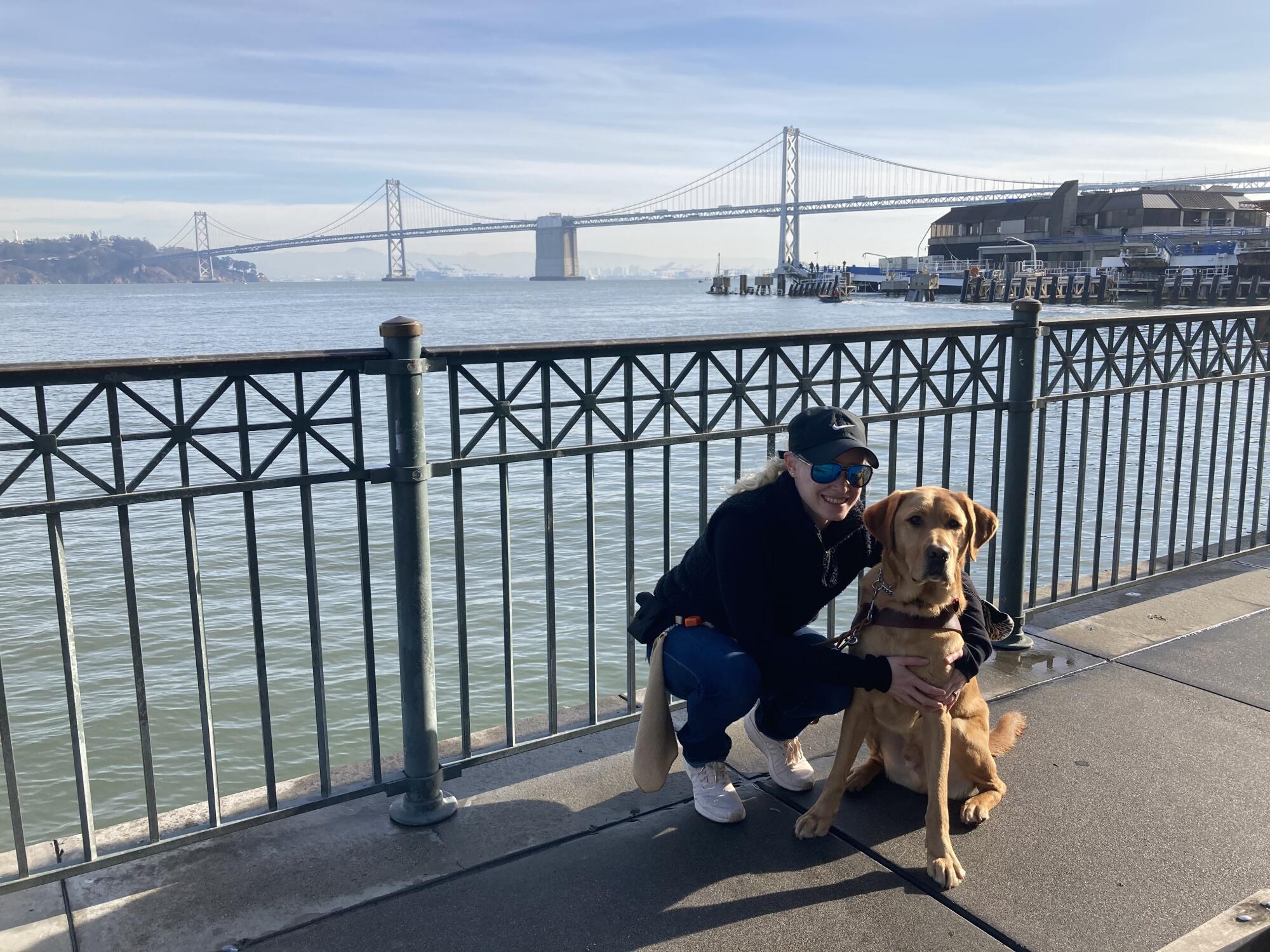
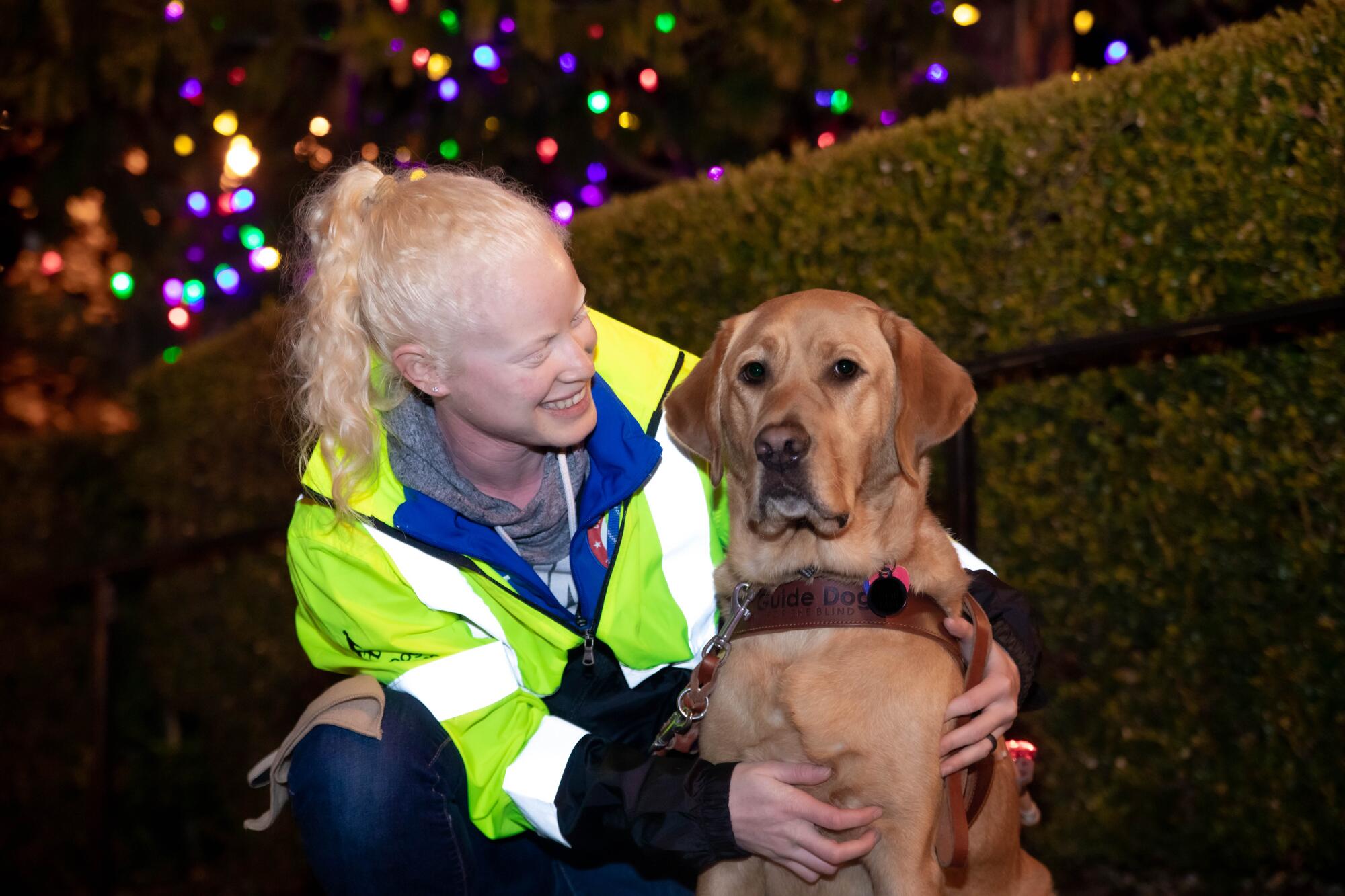
“The bond you have is unlike any other bond you’ll have with another animal or even a human,” Crosby says. “You go through happy moments and difficult moments, the dog licking you in the face, and you know they’ve got your back.”
Born with albinism, which can hamper development of the optic nerve, Crosby had her first guide dog, Keystone, for nearly a decade. When it came time to find a new one last winter, she turned to Guide Dogs for the Blind.
The Northern California nonprofit raises and trains dogs through a network of foster homes, then matches them with clients. Paolo Pompanin, a master guide dog mobility instructor, says: “It depends on the person’s personality a little bit and their pace.”
Given that Crosby spends much of her time churning down the track, it should be no surprise that she walks fast. Tron fit the bill, spirited and gangly with a natural gait that borders on galloping.
The Paralympics have begun in the same empty National Stadium that hosted the opening and closing ceremonies of the Tokyo Olympics.
They were introduced at the organization’s headquarters where Pompanin could see that Crosby immediately fell in love, even if the feeling wasn’t entirely mutual. At least not at first.
“The person knows they are getting a dog and they’re excited,” he says. “The dog finds themselves in a room with a person they’ve never met. They’re like, what am I here for?”
The relationship deepened over two weeks of training that started with basic handling and shifted to more personalized drills at a nearby track where Tron sat in the stands as Crosby worked out.
“That dog never took his eyes off her. He was whining and I thought, oh, you really like her,” Pompanin recalls. “Eventually, he understood that she would come back to him.”
Now the reddish-coated dog and the sprinter who often dyes her pale hair in outlandish colors have a routine. When she trains, he finds a shady spot to watch. On some days, Crosby’s husband finishes his workout early and comes over to play.
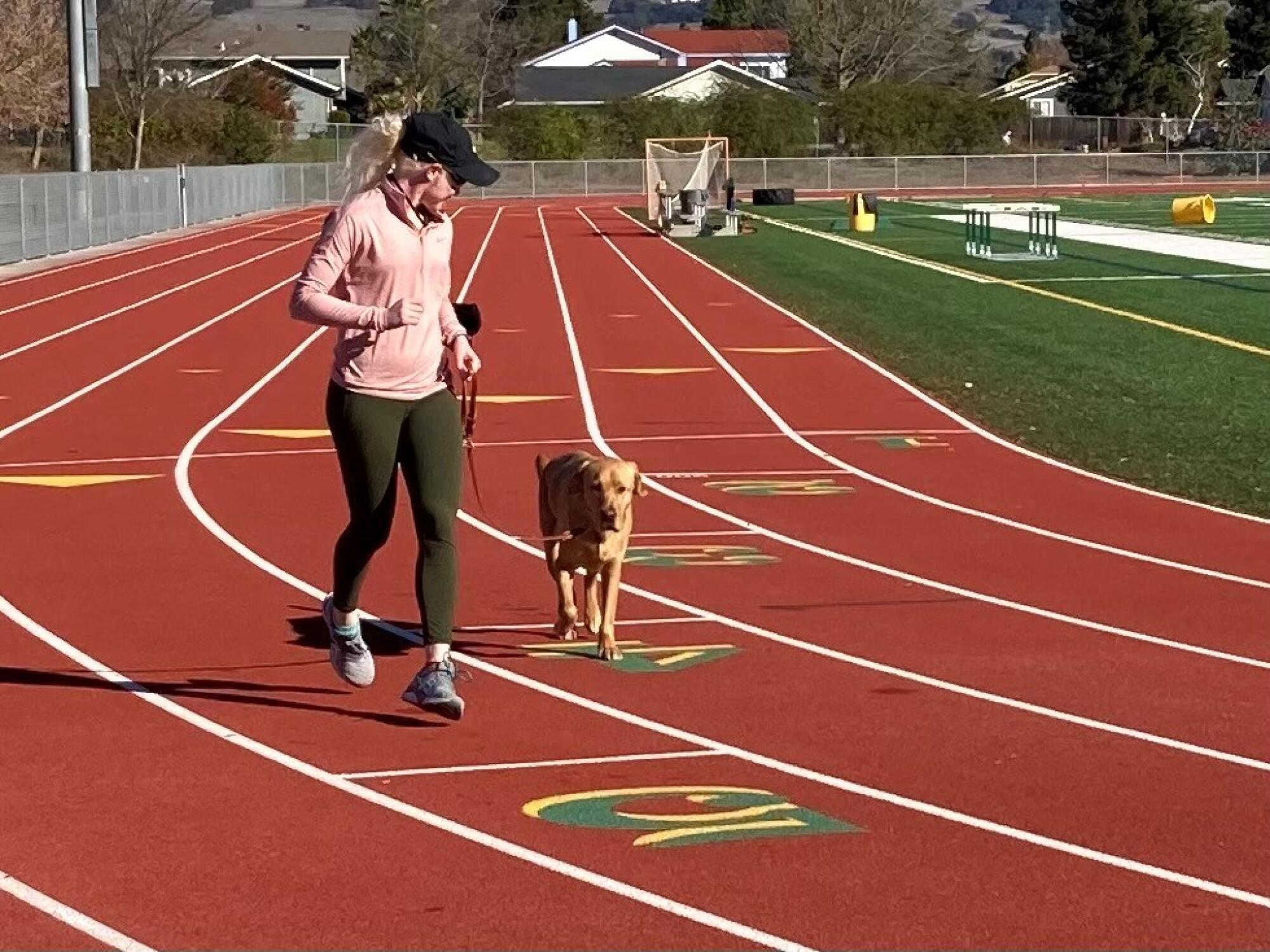
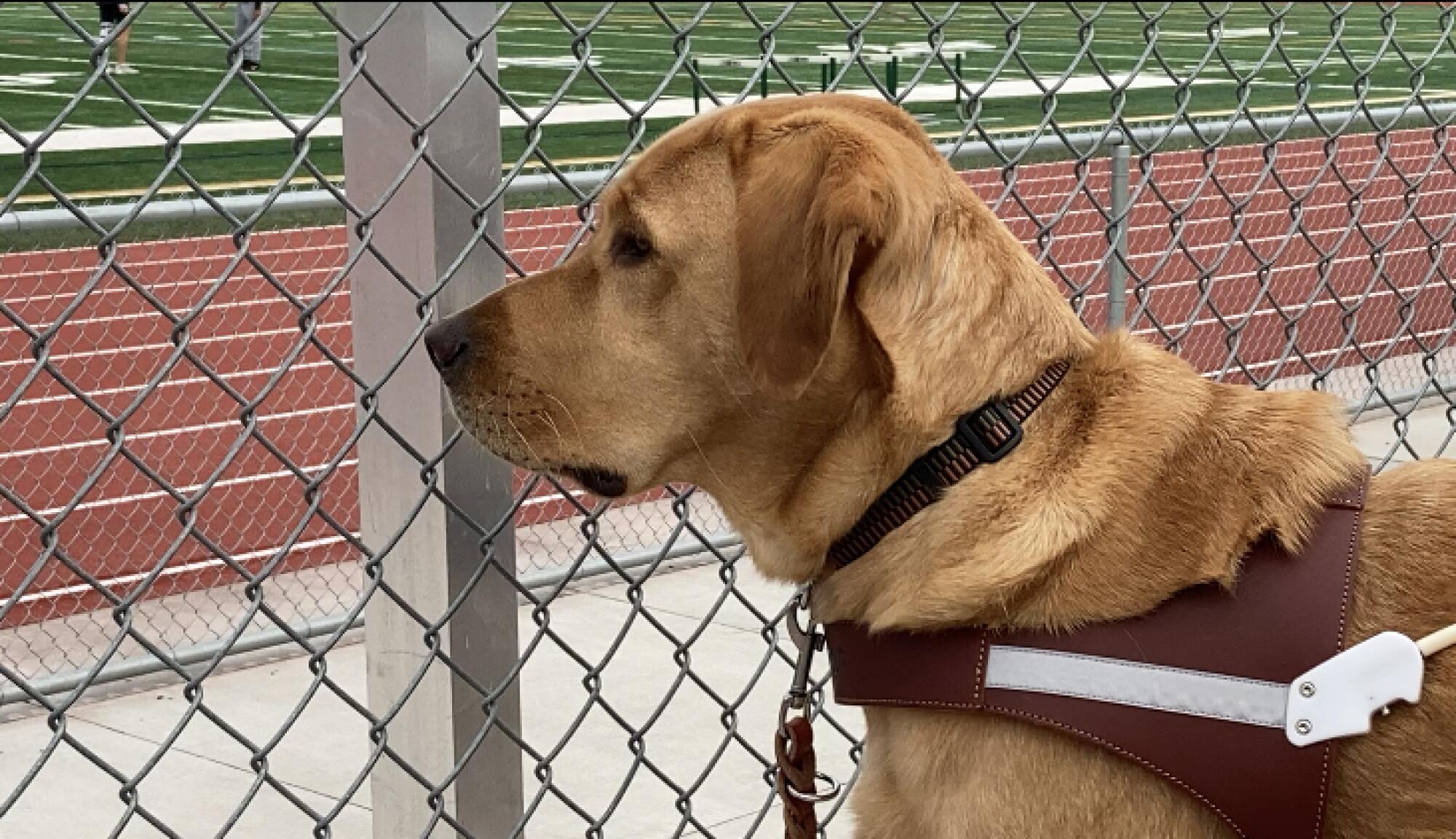
“Tron loves Erik so much,” she says. “I almost feel like I get left out of their relationship sometimes.”
For track meets in other parts of the country, Tron accompanies Crosby on the plane, lying at her feet, taking up all the legroom.
And those few minutes they spend together before races? The calming effect of his presence has science behind it — numerous studies over the past 20 years have documented that exposure to dogs can lower heart rate, blood pressure and anxiety in research subjects.
When it comes time for Crosby to warm up, she leaves Tron with a teammate or race worker. Guide dogs usually don’t mind being around strangers because, during that puppy training, they shift from one volunteer family to another, acclimating to new faces.
Trenten Merrill is looking forward to competing at the Tokyo Paralympics as he strives to offer a message of hope for amputees and disabled persons.
Anyway, Crosby says, “he gets spoiled rotten by everyone.”
Her condition is such that when she crosses the finish line, breathing hard, less oxygen goes to the optic nerve and her vision temporarily worsens. Whoever is minding Tron will sometimes bring him to the edge of the track so he can lead her away and offer a bit of comfort, especially after a hard race.
“When I finally do get back to him,” she says, “he gets so excited.”
Crosby insists she won’t let his absence affect her performance in Tokyo.
The track has always been a place where her vision impairment doesn’t seem to matter so much. A powerful stride and churning arms earned her a nickname, “The Flash.” Hard work has translated into a bronze at the 2016 Paralympics and six world championship medals.
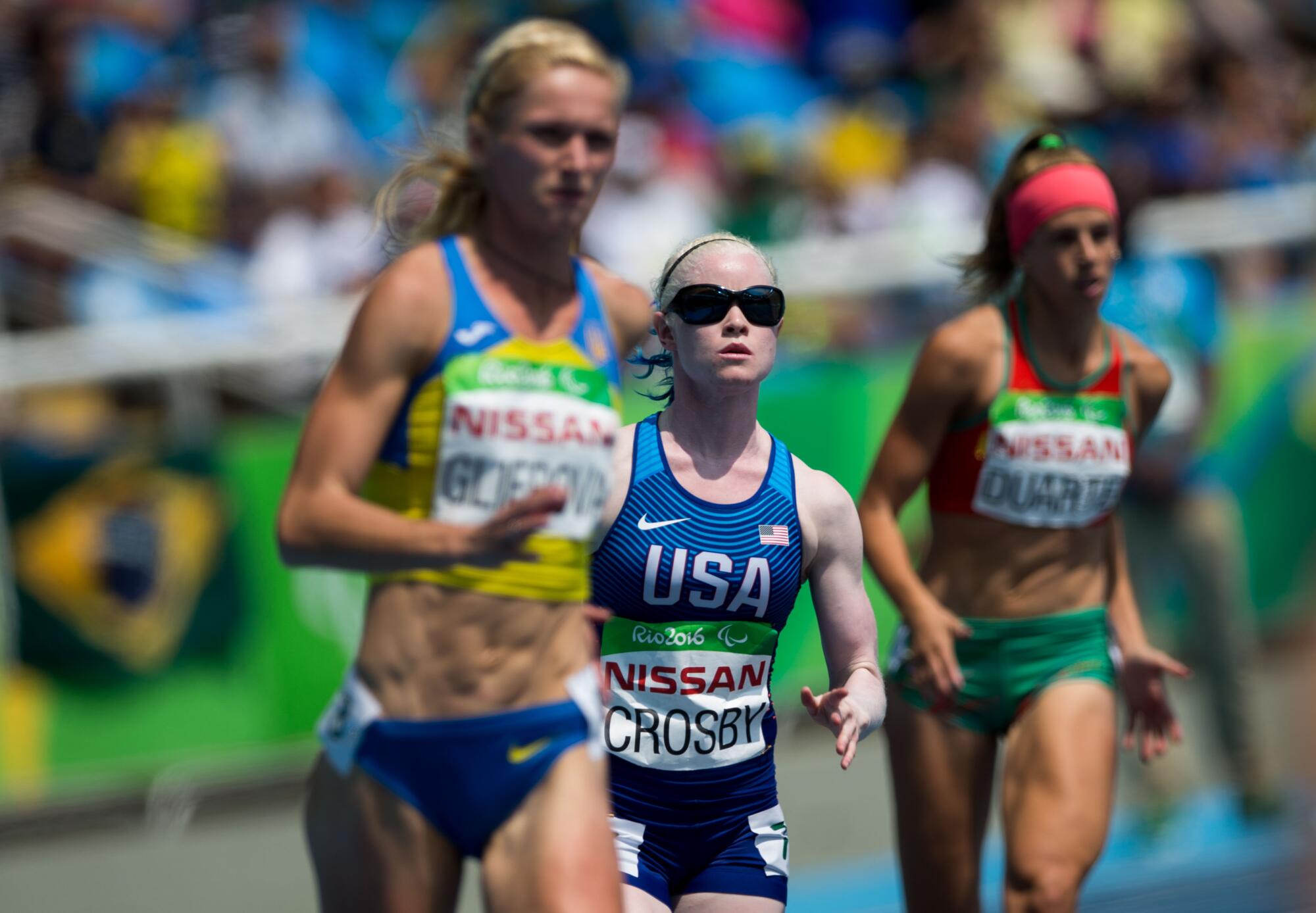
Now, she has a chance to reach the podium again, especially in the 100 meters where she is ranked third in the world. The toughest competition figures to come from Spain, Azerbaijan and Brazil.
“I try to set things up ahead of time as best I can,” she says of competing without a guide dog. “I focus on what I have to do.”
But that doesn’t mean Tron is far from her thoughts.
The U.S. team spent a week or so before the Paralympics at a U.S. Air Force base in Western Tokyo. Though focused on training, she couldn’t help checking with the people taking care of her dog back home.
“They raised him as a puppy,” she says.
It turns out Tron had spent the day swimming and playing with other dogs. When Crosby called, he was curled up asleep, snoring.
More to Read
Go beyond the scoreboard
Get the latest on L.A.'s teams in the daily Sports Report newsletter.
You may occasionally receive promotional content from the Los Angeles Times.

